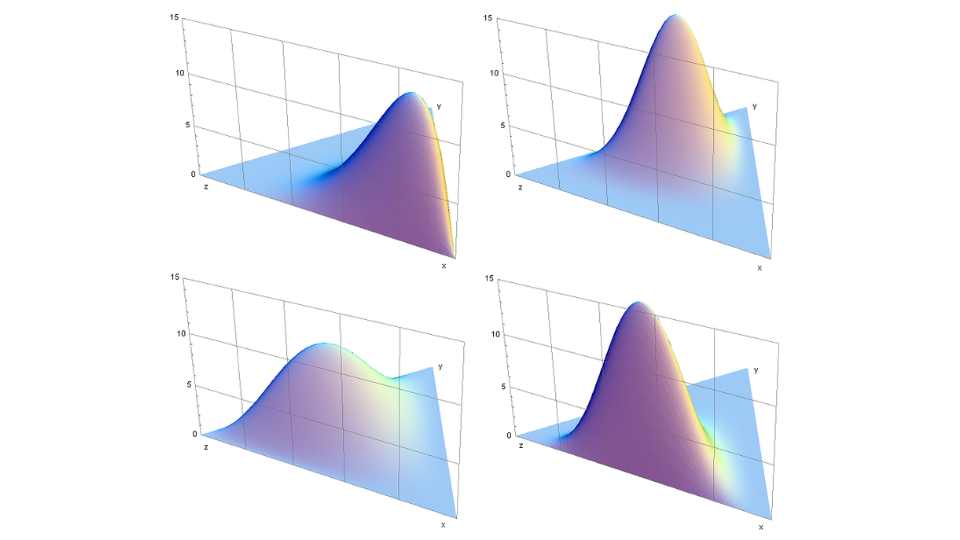What is fuzzy name matching? A fuzzy name matching algorithm, or approximate name matching, is a technique used to compare and match names with slight differences, variations, or errors. It is...


What is fuzzy name matching? A fuzzy name matching algorithm, or approximate name matching, is a technique used to compare and match names with slight differences, variations, or errors. It is...

Why Combine Numerical Features And Text Features? Combining numerical and text features in machine learning models has become increasingly important in various applications, particularly natural...

L1 and L2 regularization are techniques commonly used in machine learning and statistical modelling to prevent overfitting and improve the generalization ability of a model. They are regularization...

What is hyperparameter tuning in machine learning? Hyperparameter tuning is critical to machine learning and deep learning model development. Machine learning algorithms typically have specific...

What is CountVectorizer in NLP? CountVectorizer is a text preprocessing technique commonly used in natural language processing (NLP) tasks for converting a collection of text documents into a...

Unstructured data has become increasingly prevalent in today's digital age and differs from the more traditional structured data. With the exponential growth of information on the internet, the vast...

The F1 score formula The F1 score is a metric commonly used to evaluate the performance of binary classification models. It is a measure of a model's accuracy, and it takes into account both...

Classification vs regression are two of the most common types of machine learning problems. Classification involves predicting a categorical outcome, such as whether an email is spam or not, while...

Latent Dirichlet Allocation explained Latent Dirichlet Allocation (LDA) is a statistical model used for topic modelling in natural language processing. It is a generative probabilistic model that...

Endogenous and exogenous variables are two important concepts. In machine learning, endogenous variables are the variables that are directly influenced by other variables within the system being...
![How To Guide To Bias-Variance Trade-Off [2 Examples In Python: Polynomial Regression & SVM]](https://i0.wp.com/spotintelligence.com/wp-content/uploads/2023/04/bias-varince-trade-off.jpg?fit=960%2C540&ssl=1)
What are bias, variance and the bias-variance trade-off? The bias-variance trade-off is a fundamental concept in supervised machine learning that refers to the trade-off between the error due to...

What is data quality in machine learning? Data quality is a critical aspect of machine learning (ML). The quality of the data used to train a ML model directly impacts the accuracy and effectiveness...

How does anomaly detection in time series work? What different algorithms are commonly used? How do they work, and what are the advantages and disadvantages of each method? Be able to choose the...

Text classification is a fundamental problem in natural language processing (NLP) that involves categorising text data into predefined classes or categories. It can be used in many real-world...

How does the algorithm work? What are the disadvantages and alternatives? And how do we use it in machine learning? How does SMOTE work? SMOTE stands for Synthetic Minority Over-sampling Technique....
![Tutorial TF-IDF vs Word2Vec For Text Classification [How To In Python With And Without CNN]](https://i0.wp.com/spotintelligence.com/wp-content/uploads/2023/02/word2vec-text-classification.jpg?fit=1024%2C576&ssl=1)
Word2Vec for text classification Word2Vec is a popular algorithm used for natural language processing and text classification. It is a neural network-based approach that learns distributed...

Reading research papers is integral to staying current and advancing in the field of NLP. Research papers are a way to share new ideas, discoveries, and innovations in NLP. They also give a more...
![How To Use Text Normalization Techniques In NLP With Python [9 Ways]](https://i0.wp.com/spotintelligence.com/wp-content/uploads/2023/01/keyword-normalisation.png?fit=1024%2C576&ssl=1)
Text normalization is a key step in natural language processing (NLP). It involves cleaning and preprocessing text data to make it consistent and usable for different NLP tasks. The process includes...

Get a FREE PDF with expert predictions for 2025. How will natural language processing (NLP) impact businesses? What can we expect from the state-of-the-art models?
Find out this and more by subscribing* to our NLP newsletter.